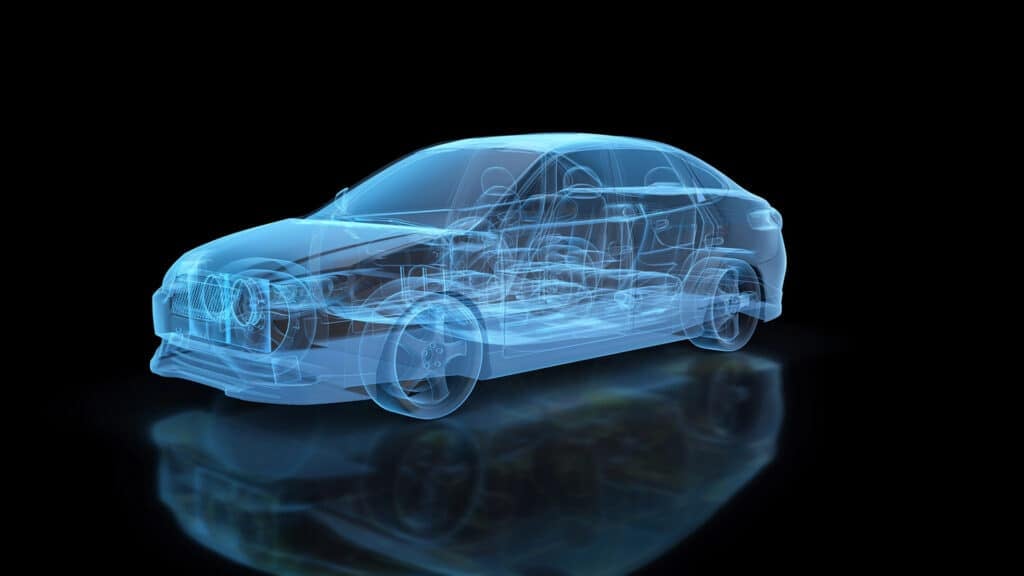Today, 4.2 billion people live in urban cities. That trend is expected to continue to grow and potentially double by 2050. This population density is straining our complex, and somewhat outdated, mobility system.
Many municipalities have adopted technologies to make their cities smarter and more efficient. In the last decade or so, we’ve seen a huge push to improve mobility in and around urban centers. But there is still a long way to go. Our current transportation system is often full of bottlenecks. Inefficient signal networks, inaccurate public transit schedules, lack of availability of public transit options, more cars on the road, more construction, and the quality of our transportation infrastructure all add strain to our system. And while we did experience somewhat of a reprieve during the pandemic, traffic congestion levels are slowly returning to the pre-pandemic normal, according to data from TomTom.
The opportunity to make mobility easier, more accessible for everyone, and more affordable is tremendous right now. But how will success impact our society? Let’s take a look.
Challenges of Our Current System
Before we dive into the opportunities, it’s important to understand the challenges that come with our current transportation system. To start, not everyone has access to affordable transportation options to get them from point A to point B in a reasonable amount of time. Even in large cities with multiple transit options, there are still gaps in mobility access. While we are seeing an uptick in ride-hailing companies and bicycle and scooter rentals, some parts of the population still struggle with first-mile and last-mile connections.
As a result, these populations are limited by geography for career opportunities, education opportunities, and even shopping. The lack of access to mobility has a negative economic impact that many cities and companies are looking to solve.
For the population that does have better access to the transportation system, we all understand the frustration of traffic and transit problems. The majority of the working population, who are now going back into the office, spend hours commuting every day. While the commutes can impact our mental sanity, they also can negatively impact our physical health too. Inefficient traffic flows and traffic congestion all impact air quality. During the pandemic, when the stay-at-home orders were in place, I saw several pictures of cities normally covered in smog, free of air pollution. As we are seeking to reduce carbon emissions to fight climate change, improving our current mobility system will have a positive impact on pollution and air quality levels.
Planning for the Future of Mobility
We are seeing a lot of movement to remove the barriers to mobility. Companies like Mobileye, Waymo, Tesla, and Uber are leading the charge on the ground for autonomous vehicles and improved access to mobility, while chipmakers like Qualcomm, NVIDIA, and Luminar continue to build scalable ADAS technology to speed autonomous technology. Robotaxis, for example, that are affordable can help solve the first mile and last-mile issues that many commuters face.
According to the Department of Transportation, municipalities are working closely with these companies, forming partnerships to subsidize transit services. Communities are also working with mobility service providers to improve access to mobile phones and services, so everyone has the ability to request rideshare.
Cities are also starting to leverage data to improve mobility in the future. Real-time information from smart cars, transit services, and other smart city technology can paint an accurate picture of what is happening in a transportation system at all times. Mining the data for insights can help with better decision-making and improve traffic management.
Lastly, we are also starting to see some movement around urban air mobility. Drones, urban air taxis, and other lighter-weight aircrafts are being developed and tested by companies like Honeywell, Joby Aviation, and Amazon to improve last-mile delivery services, cargo services, and even transportation services. Imagine being able to take an air taxi from Midtown Manhattan to JFK in seven minutes or getting from the east side of Los Angeles to the west side in mere minutes instead of the average hour-long commute. For cargo delivery, consider how many fewer delivery service vehicles would be on the road if packages could be dropped off by a drone. While it might be a few years before any of this technology is ready for use, the potential benefits seem nearly endless—creating greater efficiency in the supply chain and reducing congestion on the roads.
Economic Impact of Improved Mobility
Throughout the next decade, I believe we will see all of these things happen in several — if not every — major metropolitan area. And while it will take comprehensive studies to understand the full economic impact, I think we can easily surmise what some of the benefits will be for improving our transportation systems.
Effectively bringing more people into urban centers can create greater economic opportunities. People won’t be limited by a small radius for careers, education, and shopping. People could have the potential to make more money and spend more money — all positive things for the economy.
Going a step further, connecting suburban areas to city centers could lower housing prices as people have more options. This would be a welcome change for many people who are unable to own a home or even struggle with the astronomical rent prices that we are seeing.
From an environmental perspective, improving the efficiency of transportation systems, leveraging data to improve traffic flows, and eliminating some of the cars on the road will decrease carbon emissions and reduce air pollution. This would improve physical health, reduce the number of deaths attributed to air quality, and lessen the strain on our healthcare system.
Sure, new technologies will bring about new issues and there might even be some cost barriers for some municipalities to adopt everything, but government subsidies could help lessen the blow and improve access for all.
Like I said previously, there is tremendous opportunity right now to improve mobility access for all and if we get this right, which I think we will, the benefits will continue to drive advancement for people and cities, alike.
Disclosure: Futurum Research is a research and advisory firm that engages or has engaged in research, analysis, and advisory services with many technology companies, including those mentioned in this article. The author does not hold any equity positions with any company mentioned in this article.
Analysis and opinions expressed herein are specific to the analyst individually and data and other information that might have been provided for validation, not those of Futurum Research as a whole.
The original version of this article was first published on Forbes.
Author Information
Daniel is the CEO of The Futurum Group. Living his life at the intersection of people and technology, Daniel works with the world’s largest technology brands exploring Digital Transformation and how it is influencing the enterprise.
From the leading edge of AI to global technology policy, Daniel makes the connections between business, people and tech that are required for companies to benefit most from their technology investments. Daniel is a top 5 globally ranked industry analyst and his ideas are regularly cited or shared in television appearances by CNBC, Bloomberg, Wall Street Journal and hundreds of other sites around the world.
A 7x Best-Selling Author including his most recent book “Human/Machine.” Daniel is also a Forbes and MarketWatch (Dow Jones) contributor.
An MBA and Former Graduate Adjunct Faculty, Daniel is an Austin Texas transplant after 40 years in Chicago. His speaking takes him around the world each year as he shares his vision of the role technology will play in our future.





